Volkswagen Motorsport - Half a century of amazing racing stories
Volkswagen Motorsport, the racing department of the biggest German car manufacturer, was founded in 1966. Since then, Volkswagen has left its mark in numerous racing competitions all over the world, clinching many national, international and world championship trophies in various disciplines. It has also become an engine and chassis manufacturer for many open-wheel racing series, from ancient Formula Vee to modern Formula 3.
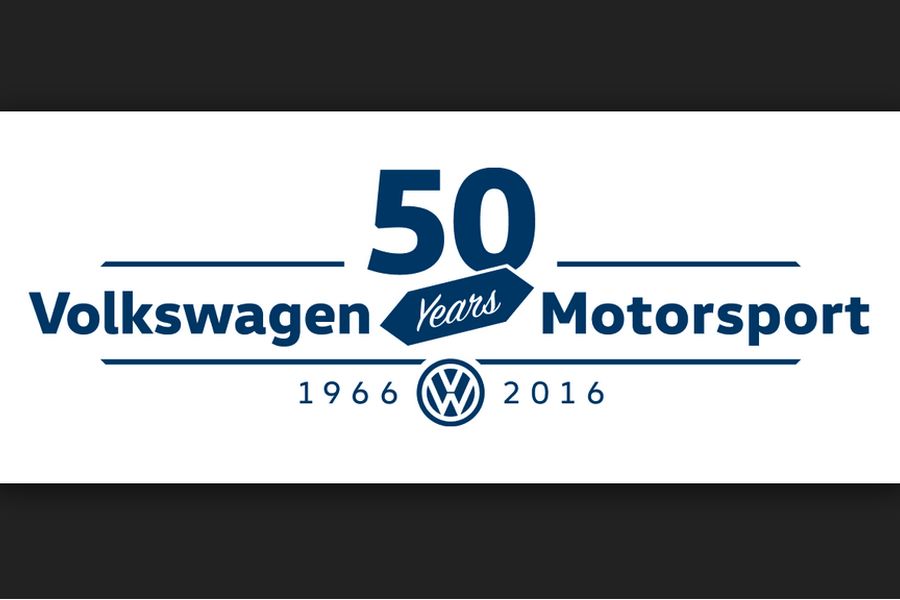
Volkswagen Motorsport’s 50th anniversary (1966 – 2016)
Greatest success: four WRC titles and three Dakar Rally wins
The biggest success of all time were four consecutive championship titles in the World Rally Championship between 2013 and 2016, both in the Manufacturers’ and Drivers’ classification, with Sebastien Ogier driving the Volkswagen Polo R WRC. Prior to that, Volkswagen Motorsport was a dominant force at Dakar Rally, scoring three consecutive wins from 2009 to 2011, with three different drivers (Giniel de Villiers, Carlos Sainz and Nasser Al-Attiyah) driving the Volkswagen Race Touareg.
Some other highlights in the history of Volkswagen Motorsport were 1980 Dakar Rally victory for Freddy Kottulinsky and VW Iltis, 1986 Group A WRC title for Kenneth Eriksson and VW Golf II GTI, German Formula 3 championship titles for Michael Schumacher (1990) and Tom Kristensen (1995)…

Formula Vee at Daytona
All started in America with Beetle’s engine in a cheap open-wheel car
The story about Volkswagen’s involvement in motorsport started with the inauguration of the German and European Formula Vee championship in 1966. But, the people who started everything were the Americans with their Formula Vee races in 1963. The idea was to offer cheap single-seaters with Beetle’s 1.2-litre engines to racing enthusiasts.
Then, in 1964, the American Formula Vee drivers drew the attention of Dr. Ferry Porsche and his Chief of Racing, Huschke von Hanstein, during a visit to Daytona. The German delegation spontaneously decided to have twelve assembly kits shipped to Germany. The first Formula Vee demonstration drives in Germany followed in the spring of 1965. In July 1965, Formula Vee had its premiere on Nuremberg’s Norisring.
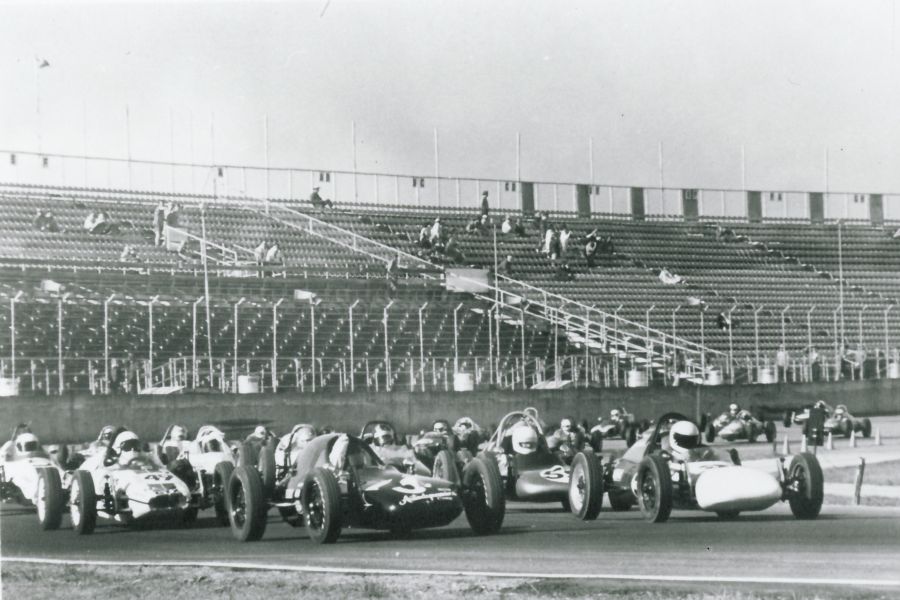
Formula Vee became popular all over the world
Since 1966 the Formula Vee spread around the world
In 1966, the company named Formel V Europa was founded in Munich and the German Formula Vee championship was organized. There was also a European championship, then USA vs. Europe challenges and even an unofficial world championship. The Formula Vee idea spread around the world like a wildfire and soon there were like more than 1,000 Volkswagen racing cars registered around the world, including new chassis constructions such as the Austro V, Kaimann, Fuchs, Olympic, Apal, Bora, HAS, RPB and Swiss-V.
In one year, Volkswagen has conquered the world of motorsport with its Formula Vee. Many legends of motorsport generations, such as Dieter Quester, Dr. Helmut Marko, Jochen Rindt, Niki Lauda and Keke Rosberg, began their careers behind the wheels of Formula Vee.

Jochen Mass in the Formula Super Vee in 1971
Formula Super Vee was launched in 1971
The vehicles’ engine performance rapidly increased from 40 to 70 hp and even went on to eclipse the 100 hp mark. In 1971, the second Volkswagen racing series car was established when the Formula Super Vee was launched.
The Volkswagen engines boasted displacement of 1.6 liters and initially delivered up to around 120 hp. An engine performance improved rapidly and hit the 150 hp mark after just a few years, eventually even rising to almost 200 hp.

Formula Vee at Volkswagen Motorsport’s 50th-anniversary celebration
Formula Super Vee came to an end in 1982
Little by little, the professional racing teams and drivers began to dominate and they left little room for the amateurs. Some big British chassis manufacturers (Lola, March and Ralt) were dominating in the Formula Super Vee field.
The costs began to rise, they even surpassed their Formula 3 counterparts. It caused Volkswagen Motorsport’s decision to finish the game. Formula Super Vee story came to an end forever in 1982 and Austrian Walter Lechner took the last European championship title.
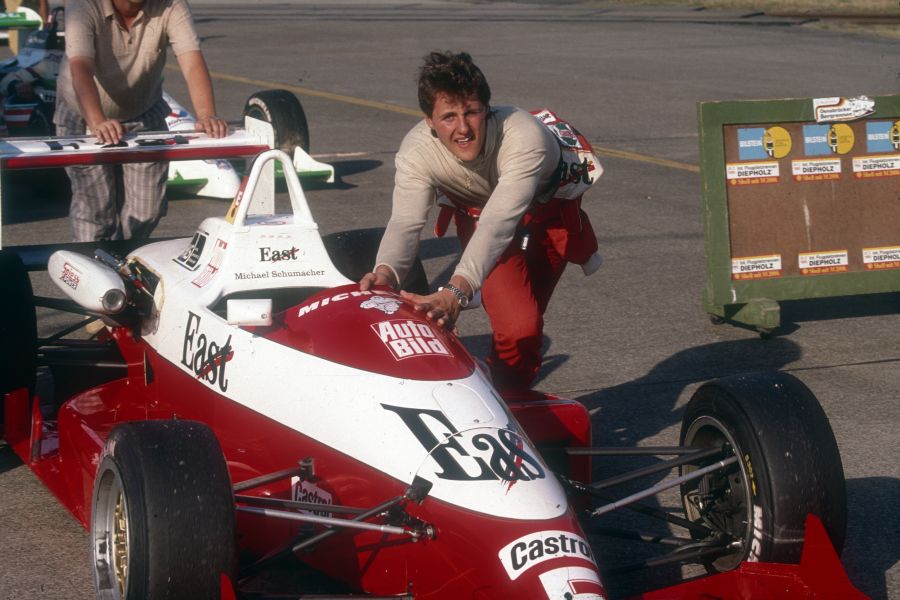
Michael Schumacher and his victorious Reynard 903 (Volkswagen)
Volkswagen participated in the Formula 3 since 1979
In the next couple of decades, Volkswagen was active in the open-wheel competitions as a constructor and engine supplier in a different championship, mostly in the Formula 3. From 1979 to 1994, Volkswagen had powered drivers to 92 individual wins, claiming seven overall titles.
The most famous names on the list of Volkswagen—powered F3 champions are Michael Schumacher, Tom Kristensen or Bernd Schneider. In recent years, since 2007, the main series of interest is the European Formula 3 Championship.
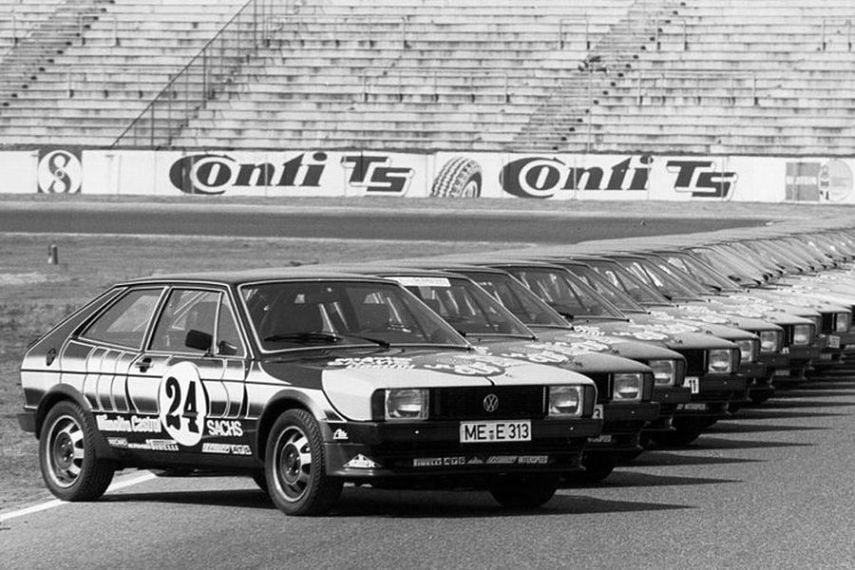
Volkswagen Junior Cup was launched in 1976
The first single-make touring car cup started in 1976
Another milestone year in Volkswagen Motorsport’s history was 1976. The name of the company was changed to Formel V Europa – Volkswagen Motorsport. In April that year, at a packed Hockenheim Motordrome, around 80,000 spectators witnessed the first Volkswagen Cup – the VW Junior Cup was born.
A special series of fifty identical 105 hp VW Scirocco cars was designed for the cup. Besides inexperienced young drivers, a number of celebrity guest drivers also lined up on the starting grid. Among the more accomplished drivers in the inaugural season was the Formula 1 driver Manfred Winkelhock, who won three races. The championship was won by Willi Bergmeister.
Through the years, Volkswagen provided several single-make racing cup competitions on the international level or only in Germany, with cars such as Golf, Lupo or Polo. In 2010, the new Scirocco R Cup was born and it lasted for five seasons, until 2014.
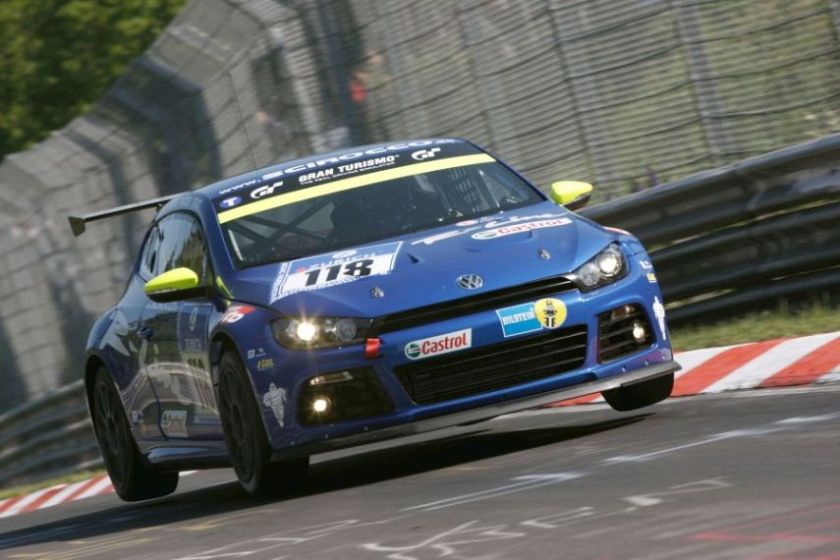
Volkswagen Scirocco GT24 at 2008 Nurburgring 24h race
Streak of class victories at Nurburgring 24h
In 1997, Volkswagen was also involved in a famous Nurburgring Nordschleife 24-hour race. The first big success came in 2007 when VW Golf GTI won the SP3T class. Another class victory followed a year later with Scirocco GT24.
The third SP3T class win was captured with CNG-powered Scirocco GT24 in 2009 and then, in 2010, Volkswagen has won the AT (alternative fuels) class with Scirocco. The Nurburgring era was closed with one win in the AT class.
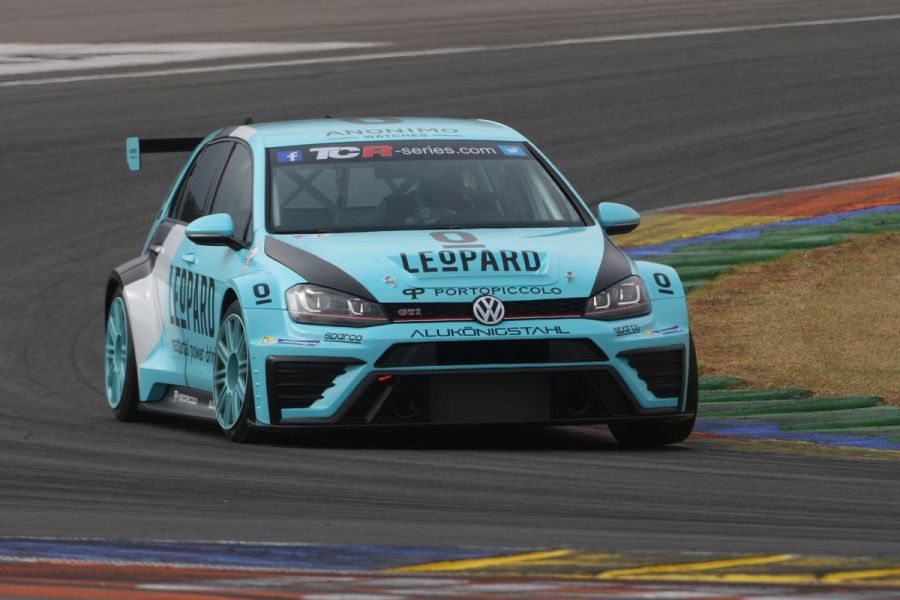
Stefano Comini was the 2016 TCR champion with VW Golf
Championship title for VW Golf in the 2016 TCR International Series
In 2015, Volkswagen entered the inaugural season of the TCR International Series through the Liqui Moly Team Engstler as a customer team with a brand new Volkswagen Golf GTI TCR.
In the 2016 season, the number of customer teams expanded not only in the TCR International Series but also in other TCR competitions. Stefano Comini became the 2016 TCR International champion with Leopard Racing’s Golf.
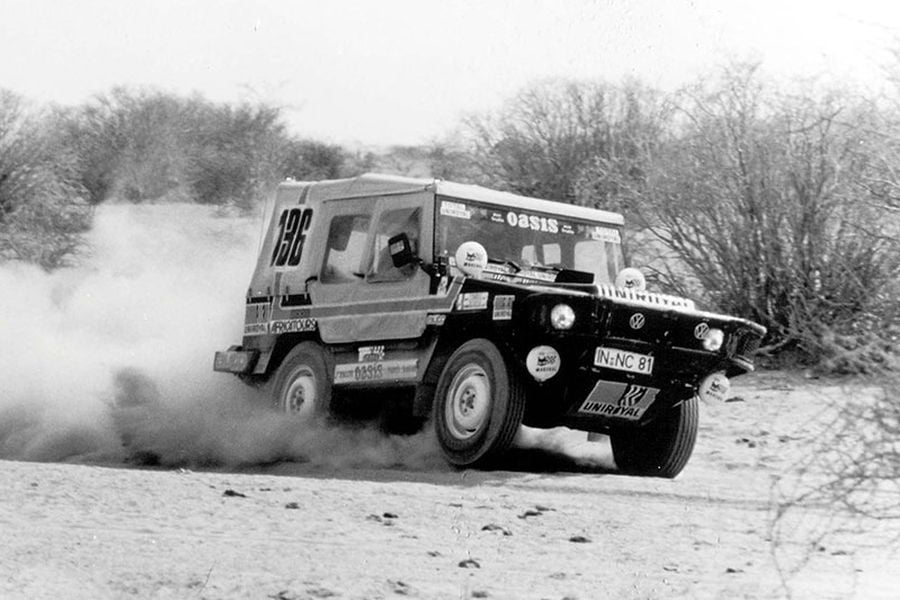
Victorious Volkswagen Iltis at 1980 Dakar Rally
Sensational victory for Volkswagen Iltis at 1980 Dakar Rally
The special chapter in the history of Volkswagen Motorsport is dedicated to ‘dirty’ disciplines such as rallycross, cross-country rallying or stage rallying. The first generation of VW Golf GTI was a successful car both in the German and European rallycross events in 1978.
The first major success for Volkswagen came in 1980, when Freddy Kottulinsky and Gerd Loffelmann became the winners of Dakar Rally, driving the #136 Volkswagen Iltis.

Kenneth Eriksson in the 1986 World Rally Championship
Group A WRC championship title for VW Golf
In 1981, the VW Golf GTI was a championship-winning car in the German rally championship but the much bigger success followed in 1986 in the World Rally Championship. It was the last season of the Group B cars but besides those monster-cars, many teams were running Group A cars. Volkswagen Motorsport’s driver Kenneth Eriksson was awarded Group A World champion. He was driving the VW Golf II GTI.
After Group B cars vanished, Volkswagen stayed in the WRC for three more seasons with Golf GTI, scoring six podiums and even one victory. Kenneth Eriksson was the winner of 1987 Rally Cote d’Ivoire with Volkswagen. Volkswagen pulled out from the WRC after 1990 season, returning for two seasons (2002 and 2003) in the Junior WRC competition with Polo S1600.
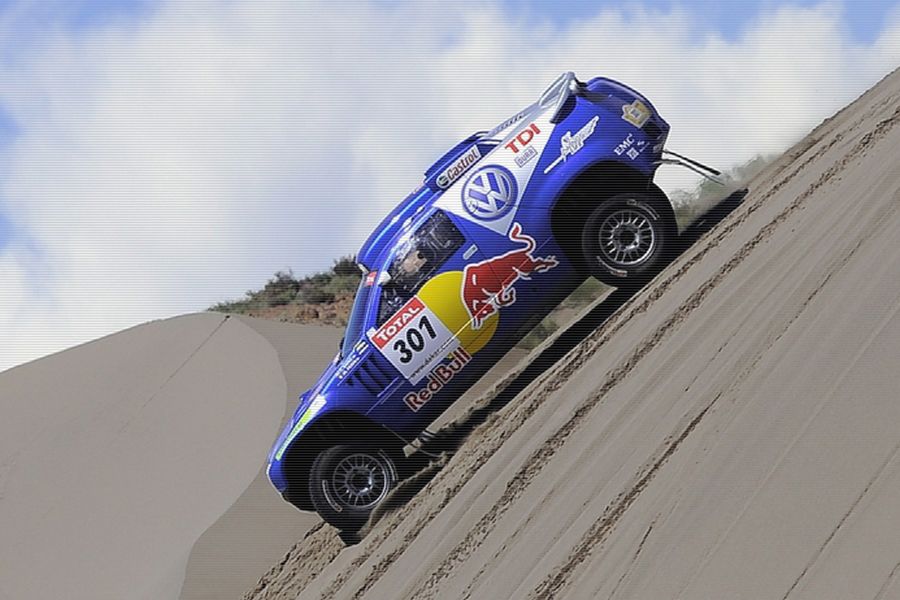
Volkswagen scored its second win at Dakar Rally in 2009
Return to Dakar in 2003, three wins from 2009 to 2011
In 2003, Volkswagen returned to Dakar Rally with 2WD Tarek prototype. Next year, the diesel-powered four-wheel-drive Race Touareg was ready. Year by year the results improved, so Jutta Kleinschmidt finished third overall in 2005 and Giniel de Villiers was second in 2006.
In 2009, during the first Dakar Rally which took place in South America, Volkswagen Motorsport finally scored a victory, 29 years after a historic win in 1980. It was the first Dakar win for a diesel-powered car. The winning driver was Giniel de Villiers, his teammate Mark Miller finished second. In 2010, Volkswagen took all three podium places, with Carlos Sainz as the winner. One more podium sweep followed in 2011, with Nasser Al-Attiyah winning the race.
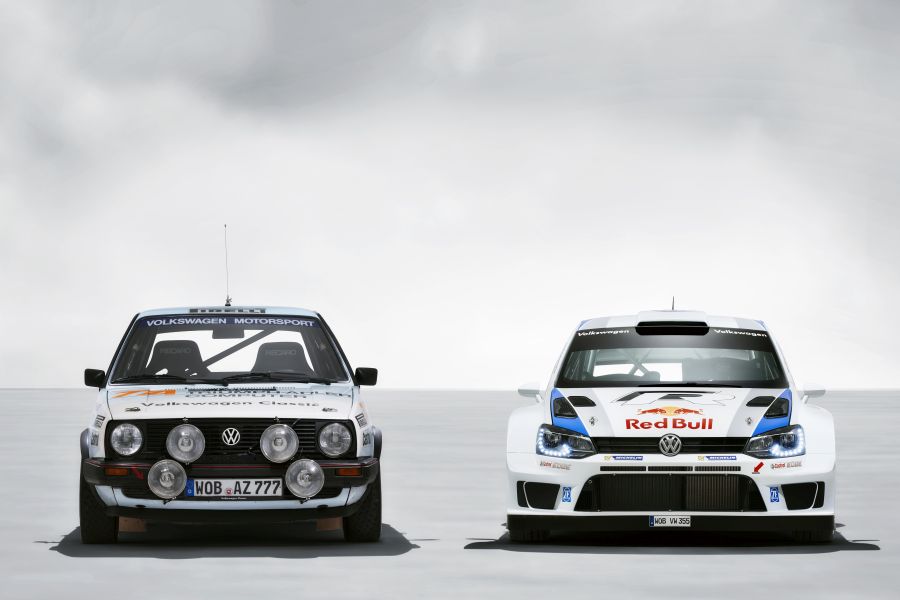
Two world champions: Group A VW Golf GTI and VW Polo R WRC
Volkswagen was unbeatable in the WRC from 2013 to 2016
After that victory, Volkswagen Motorsport said ‘goodbye’ to Dakar and switched its interest to World Rally Championship. Carlos Sainz was one of the developing experts for the all-new VW Polo R WRC. After two preparational seasons, in which Škoda Fabia S2000 was sort of a test car, the Polo R WRC debuted in the 2013 WRC. Sebastien Ogier was a leading driver, backed by Jari-Matti Latvala and Andreas Mikkelsen.
In four seasons, Volkswagen Polo R WRC became one of the most successful rally cars in the history, scoring 43 WRC wins and capturing double titles in all four seasons. Sebastien Ogier and his co-driver Julien Ingrassia were climbing to the top podium spot 31 times.
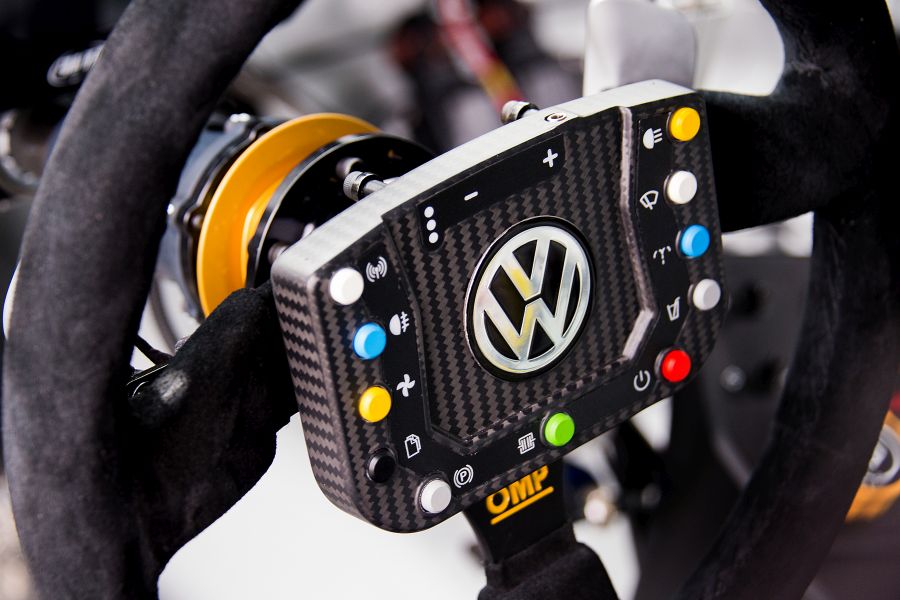
Volkswagen Motorsport left WRC but stays in touring car and rallycross races in 2017
New interests for another half a century
Volkswagen Motorsport withdrew from the WRC shortly after the season of 2016 ended. The focus switched on the customer programme for touring cars races with VW Golf GTI TCR and serving as a support for the private teams in the World Rallycross Championship and Global Rallycross Championship.
Photos: Volkswagen Motorsport,








